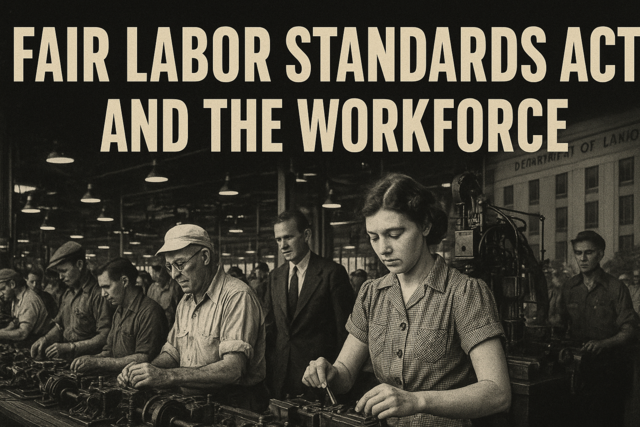Introduction
Creativity can be characterized much the same way as problem solving � it is a challenging human endeavor that expends much emotional, mental, and even physical energy in the process. Yet, the personal satisfaction that accompanies the completion of a creative idea is often unparalleled. Being creative, whether or not it is applied to the decision-making process, is nothing short of exhilarating!
So what could possibly be the problem?
Creativity does not just happen at will, although it could happen randomly. It is definitely a skill that can be honed, coaxed, and embellished. Unless, of course, you run into barriers to the creative process. What could those possibly be? Well, the average person is well versed in the subject of barriers. We run into them every day when driving, or attempting to enter through an exit, or even being forbidden attendance to an event, because we lack the proper ticket or identification. Indeed, barriers are what prevent us from reaching some form of personal or professional satisfaction.
With regard to creativity, there are a variety of hurdles and obstacles that keep a person from exercising their full creative potential.
Obstacle #1 � Resistance to Change
Humans are naturally creatures of habit. It is a form of comfort when familiar routines are accessed and implemented. Think about your own life: Do you follow a fairly normal pattern of behavior? Do you sleep on the same side of the bed each night? Wake up and have the same morning libation while going about your same morning preparations for the day? Do you take the same route to work? Listen to the same biorhythms that tell you when you have sat at your desk long enough and should attend to a different task? Routine, routine, routine. Frankly, without it the world would be chaos, so habitual behavior is beneficial to society.
However, when it comes to being creative, routines make it difficult to "think outside the box." Even thinking about being creative can be tiring, because you realize that to do so means you must step out of the rut and challenge yourself. That is a prospect that goes against all that is sacred to the routine-lover.
One suggestion that should instigate creativity is to do something different every day. Upset your routine and do things out of order. Then talk to yourself; tell yourself to think of one (or more) new ideas about how to do things differently at work, school, or home. Apply this creative thought process to bigger ideas. For example, perhaps organization and time management are problems at home. Think of ways that you could improve this � making a list or some type of graphic organizer -- and reaching for unusual answers that have never been tried. Maybe you could create a "circular file" for the entire staff. People could submit one item that they are unsure of how to catalogue. Then everyone is required to remove an item from the circular file once a week and come up with a unique response.
Removing one obstacle to creativity is as easy as instigating change in your life.
Obstacle #2 � Fear of Being Judged
Do you envy the person who is unafraid to speak their mind, even if it goes against the grain of a social group or society? Creative people are confident in their ability to add something new and different to a conversation, without the often dreaded concern about what other people think. If you are the type of person who is intimidated by the judgment of others, then that can be a formidable barrier to creativity.
Every social and professional group has its fair share of naysayers. It is even possible to opine that taking a negative point of view is the common mindset of the average person, so ingrained is our penchant for negativity. However, for those who are sincere about growing their creative abilities, the first step is likely to be taking yourself to task and learning how not to care what other people think. (Of course, this can be taken a bit too far; be socially responsible with this attitude.) Become the positive influence in a group, don't be a gossiper, and always find good things to say about others and their ideas. And do not be afraid to make suggestions that others will naturally find "off the wall." In that way, you are growing the atmosphere into one that is accepting, even encouraging, of creative thinking.
Imagine if Salk had not been creative in his pursuit of a polio vaccine. Think of him sitting at the lunch table with his researcher colleagues and saying, "I think I might have a cure for this dreaded disease," and his colleagues scoffing and deriding him with responses like, "Oh sure," or "Not likely," or "Salk's gone off the deep end."
The creative person, like Jonas Salk, is confident in their own abilities, and not afraid to make a mistake. After all, the creative process may take you down a number of paths to a dead end before you find your way through. Learn to laugh at yourself, and be supportive of others. But most important, learn not to be concerned with what others think of you. Love yourself � that's the best way to barrel through barriers to creativity.
Obstacle #3 � Be a risk taker
People who are creative are willing to take chances. Most situations are bound by rules and procedures, and these are necessary in a world of 7 billion people, to be sure. However, that does not mean organizational structures cannot be completely inflexible, nor that a workplace or other setting would not benefit from a little innovation. This is a good time to assess yourself. Do you seek structured situations as a guard against having to be creative? That may sound complex, but in many cases it is true. It is much easier to be a rule-follower, than to be a creative thinker, and if you always find yourself in situations that are highly structured, then it is very likely an unconscious way of having to face your own foibles about being creative.
So, what should you do? Well, just as there are solutions to other barriers that are fairly simple, but effective, it is also true in this case. Find a situation that has little or no structure at all. For example, take an art or music class in which you are required to make up the rules of the experience. Or, finish this class. There is nothing like an online class with no time frame for completion to force you to think creatively. When will you do the reading? How can you apply the learning to your own life? If the class is touting creativity � just how can you operate in an unstructured manner to complete the class? Maybe you can work with a partner, if your regular method is to work alone. Maybe you could introduce it as a collaborative project in the workplace, instead of trying to understand the concepts by yourself.
Come on now, be creative, step away from organizational structure and let your ideas flow.
Obstacle #4 � Overcoming the dread of the hard work of being creative
Yes, we have said it before. Problem solving and creativity are two of the most demanding mental endeavors a human being can undertake. In the case of creativity, it is much like giving birth. Ideas need to be babied, coaxed, cajoled, enticed to come out of their hiding places. Sometimes, like a shy child, creative ideas will elude you for a time, and that is quite confounding and frustrating. This type of experience certainly doesn't lend itself to wanting to embrace creativity. Humans do not like to learn new things, or try new things, if they may end up looking foolish -- but especially if it requires too much hard work for the perceived rewards.
But creativity is just like any other skill. You have to learn what it is and how to harness it. Then, like any other capability � it has to be practiced to be perfected. If it sounds like you have to engage in a lot of hard work just so you are able to do more hard work � well that is not totally untrue. However, it becomes a matter of looking at the bigger picture that is life. Indeed, we all love to play. Most of the time it seems that we work only so we can get to our favorite part of life � which is recreation. But there is veracity to the saying "all work and no play makes Jack a dull boy." In other words, life would become boring and meaningless if we played all the time and were never productive.
So, how does one overcome the dread of the hard work that goes into being creative? Well, at the risk of going against the very advice offered here � to think outside the box and break up the routine and structure, it is the very use of structure and routine that can help frame a schedule for the novice creator! While in all other instances, if we recommend "unstructure" in order to become creative, it might be best to set aside time to act creatively.
For example, perhaps you have a driving desire to be a writer. You can feel that book idea inside of you just itching to get out. But you make it a habit to pass by your desk with the open laptop at home, to avoid having to sit down and harness your thinking, to be able to focus on the sole matter of putting words to paper in a manner that is eloquent and engaging. In other words, to be creative. It is more than a challenge to develop creativity � it is frightful. The possibility of failure looms large, particularly at the beginning of the creative process, and for those with little or no experience or comfort level with the skill. Therefore, just do it. Define a time and place when you will devote yourself solely and fully to the idea of pursuing a creative project of your interest. Then, no matter what, stick to that schedule. Even if you sit down at the computer and not a single word spills out for the first few sessions, do not despair and do not give up.
You can't force creativity, but you can definitely create a setting that will encourage its growth. Be prepared. A creative project does not generally get completed in a single sitting. Be kind to yourself, relish the development of an idea or a project, revel with pride in your unique creation.
Oh yes, back to barriers to creativity � and its application to decision making
If it seems we have gotten side-tracked on our quest to understand the decision-making process, nothing could be further from the truth. In this article, we have explained the importance of being a creative individual to the furtherance of decision making. Creativity can allow you to come up with possible solutions and alternatives to a decision that might not otherwise have presented itself without a well-developed sense of inventiveness.
It seems you, the learner, must keep track of multiple skill sets at the same time. These include the steps of creativity and how to overcome its barriers, problem-solving steps and decision-making steps.






























